
|
|

I
took over this e-zine when Gail, its originator was unable to continue it. With
Gail's permission, I have added her original Rock's of the Week so that everyone
can find the information readily. Please feel free to visit Gail's web site at http://www.davesrockshop.com. |
|
Rose Quartz
(Alternate birthstone for January)
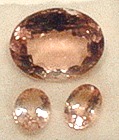
|

|
|
Scientific:
Pink or peach colored quartz is called rose quartz. Rose quartz is in the rock crystal family of stones. The name quartz is derived from the Slavic word
'Kwardy' which means 'hard'. Rose tinted quartz is caused by traces of titanium or manganese. Rose quartz tends to be cloudy, crackled or turbid and certain varieties contain rutile (another mineral), which may produce a star effect when cut and polished. Rose quartz tends to be brittle; therefore large carvings may show cracks. It is also prone to fading over time. |
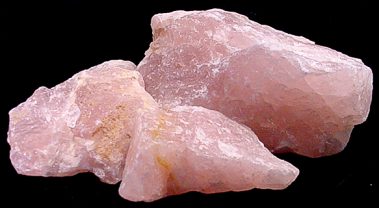
|
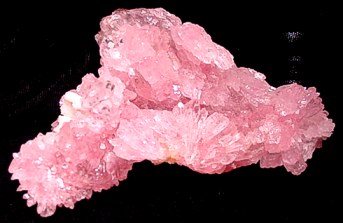
|
|
Crystals of rose quartz are very
rare (see above photo). More usually it is found in massive form, which is used for carvings, cabochons or beads. Transparent rose quartz material is rare as well. When available, transparent rose quartz is sometimes facetted for use in jewelry. Sometimes rose quartz is confused with morganite, kunzite, pink tourmaline or pink topaz. Rose quartz is found in pegmatites. The best material is from Madagascar but Brazil produces a greater quantity. It is also found in Colorado, South Dakota, and Utah in the USA, the former USSR, Scotland, India, Mozambique, Namibia, Sri Lanka and Spain.
|
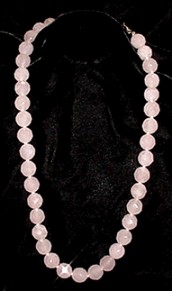
|
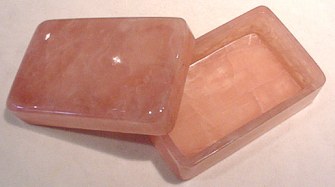
|
Rose Quartz is very hard, so
you can clean it with soap and water. Keep it
out of direct sunlight, as it will fade the
color.
Variety of: Quartz
Hardness: 7
Chemical Composition: SiO2 Silicon Dioxide |
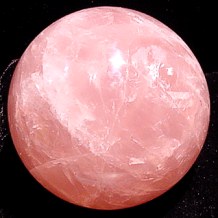
|
|
History:
There is little known historically about rose quartz. However, beads have been found in Mesopotamia that date back to 7000 BC. It is said that the Assyrians and the Romans were the first to use it. Rose quartz has been found to be used in jewelry by the Assyrians in 800-600 BC. In ancient Rome, rose quartz was popular for making seals. These seals were used in clay or various dyes to show ownership or identify authors. |
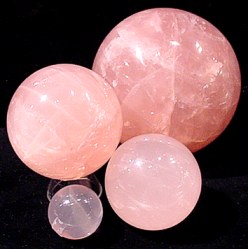
|
|
Myth:
Traditionally, babies have been given rose quartz to help them during their transformation from the spirit world to their physical body. The gentle pink rays of rose quartz produce a nurturing, calming and gentle effect, which helps them adjust to their new environment. |
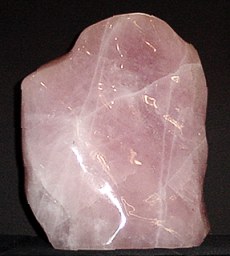
|
Metaphysical:
Rose quartz is the most popular healing stone. It is the stone of unconditional love and healing. If there has ever been a stone specifically for Valentine's Day, then rose quartz is it. Rose quartz is soothing, calming, and comforting to those who need it. This stone is non-judgmental, which is why it is such a powerful healing stone. |
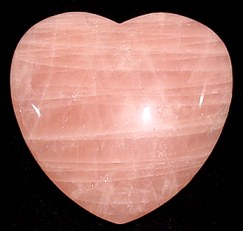
|
|
This stone is said to heal broken hearts as well as emotional injuries. Rose quartz definitely improves the energy in both the person it belongs to and the space it is in. The gentle glow of the pink stone radiates nurturing love and universal harmony. Rose quartz's gentle energy insures fertility and helps in avoiding miscarriages. It supports the heart and is an effective healer in constrictive heart problems. It is good to use after operations or dental surgery. It is said to help clear the complexion as well as prevent wrinkles. Rose quartz is recommended for weight loss because it helps balance the self, as well as teaches self-love to the wearer.
Plant rose quartz in your garden. The plant kingdom can feel your intentions and radiates them back to you. |
|













